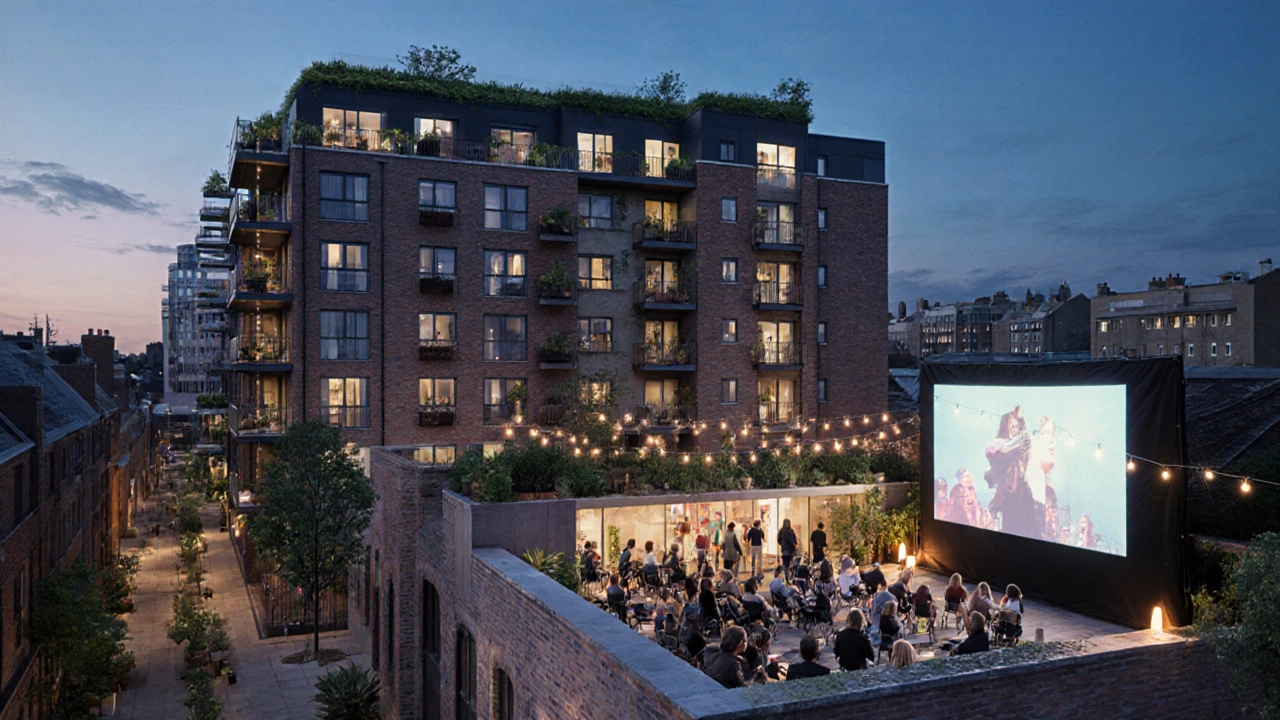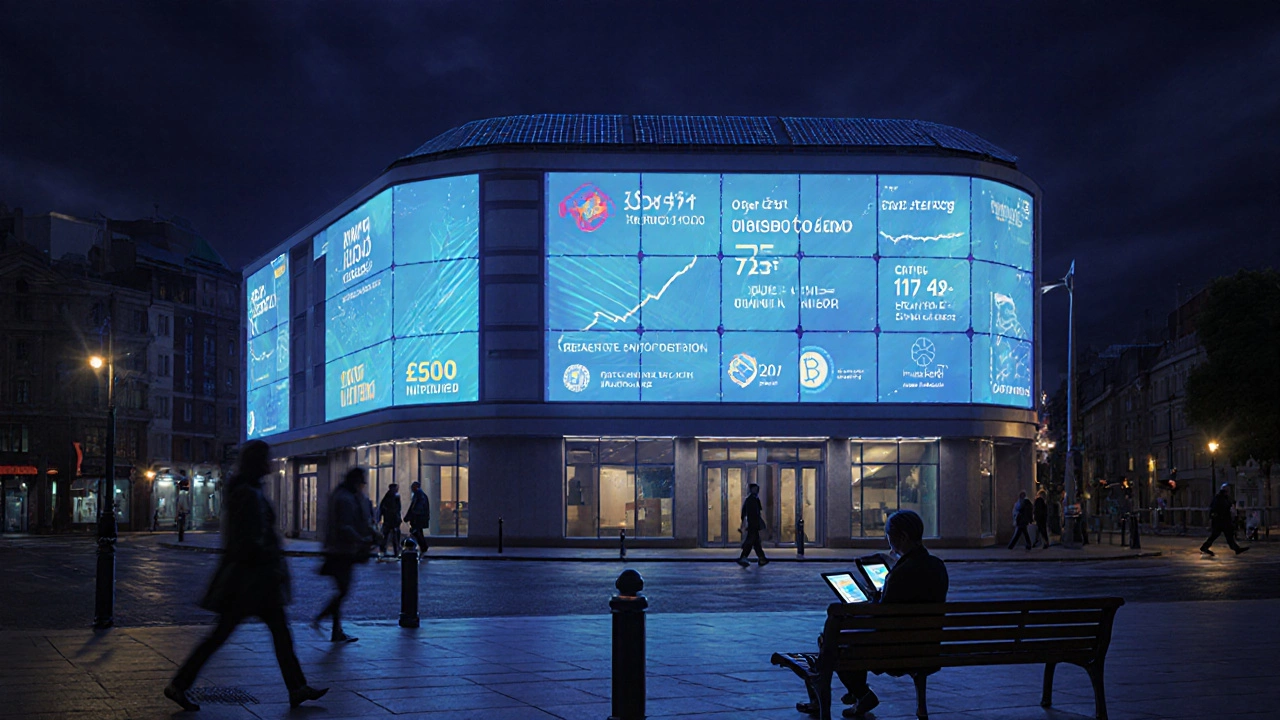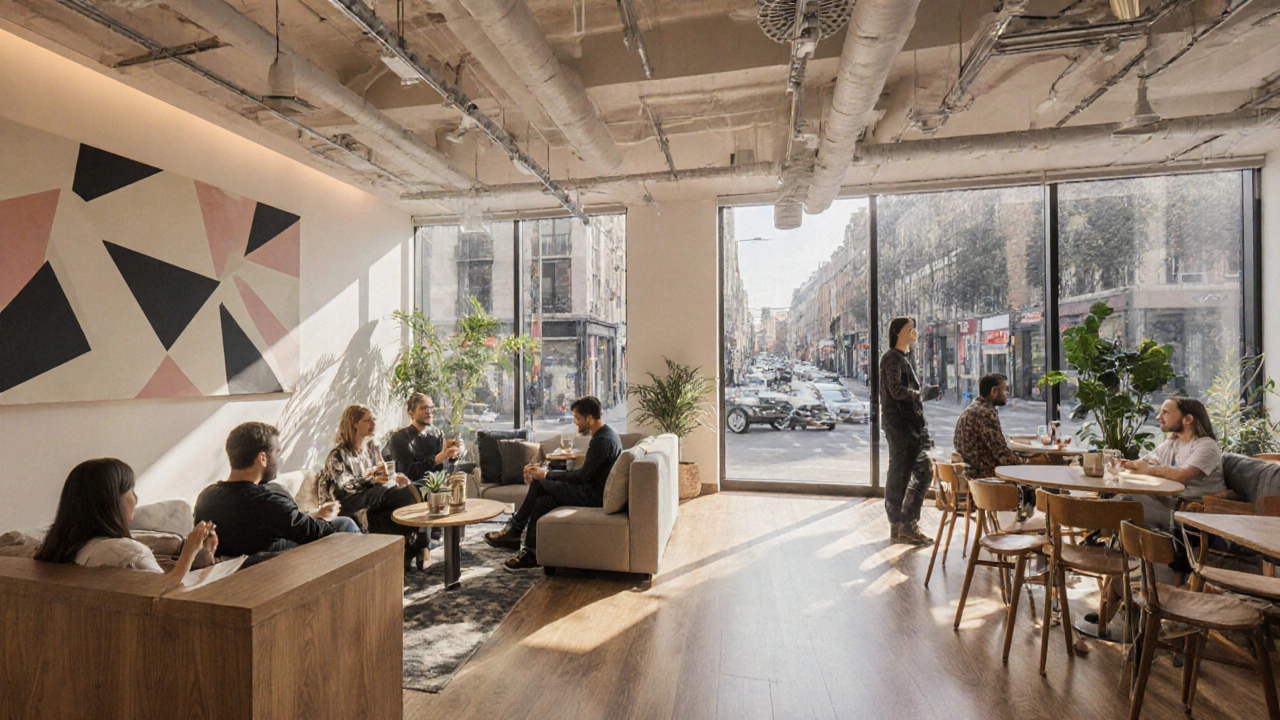Commercial Real Estate Value Estimator
Estimate Your Property's Future Value
Based on 2025 market trends and the article's insights about adapting to future needs.
Results
Key Value Drivers
Commercial real estate isn’t what it used to be. Five years ago, office towers in city centers were seen as safe, high-yield investments. Today, empty floors and shrinking leases are the norm in many downtowns. The future of commercial real estate isn’t about rebuilding the past-it’s about reinventing what these spaces are for.
Office Space Is Shrinking, But Not Disappearing
Office demand in the UK has dropped by nearly 20% since 2019, according to data from the Royal Institution of Chartered Surveyors. That doesn’t mean offices are dead. It means they’re changing. Companies aren’t cutting space because they don’t need people-they need better reasons to bring them in.
Leaders now ask: Why should employees come in? The answer isn’t just ‘for meetings.’ It’s about collaboration, culture, and connection. That’s why the best office spaces today aren’t rows of desks. They’re hybrid hubs with quiet zones, collaboration rooms, and on-site cafés that feel more like community centers than corporate lobbies.
Landlords who stuck with traditional layouts are struggling. Those who’ve converted underused floors into event spaces, co-working pods, or even health clinics are seeing higher occupancy. A 2024 survey of London office tenants found that 68% of companies would renew leases if their building offered wellness programs, childcare support, or local food vendors.
Retail Is Adapting, Not Dying
Shopping malls aren’t gone-they’re just no longer just about stores. The ones thriving now are mixing retail with experiences. Think: a grocery store with a cooking class studio, a shoe shop with a 3D foot scanner, or a clothing brand that lets you design your own jacket on-site.
Amazon didn’t kill retail. It killed the idea that shopping had to be about convenience alone. People still want to touch, try, and talk. That’s why pop-up shops, local artisan markets, and experiential retail are growing faster than traditional chains. In Manchester, a former department store became a mixed-use hub with a gym, a bookstore café, and a rooftop garden. Vacancy rates there dropped from 32% to 9% in two years.
Brands that understand this are winning. Nike’s London flagship isn’t just a store-it’s a training zone with live coaching and AR try-ons. Foot traffic there is 4x higher than the average high-street retailer.
Technology Is Rewriting the Rules
Commercial real estate tech isn’t just about smart thermostats anymore. It’s about data-driven decisions that change how spaces are used, leased, and valued.
Platforms like PropTech now track real-time foot traffic, employee attendance patterns, and even noise levels in offices. Landlords use this to adjust cleaning schedules, reconfigure layouts, or offer dynamic pricing-lower rent for spaces used less than 3 days a week.
AI-powered leasing tools can predict which tenants are most likely to stay based on their payment history, industry trends, and even social media activity. One London property manager reduced tenant turnover by 40% in 2024 by using these tools to identify at-risk leases early and offer tailored incentives.
Blockchain is also creeping in. More landlords are using smart contracts to automate rent collection, maintenance requests, and lease renewals. It cuts down paperwork, reduces disputes, and speeds up transactions.

Flexible Spaces Are the New Standard
Long-term leases are fading. Businesses now want options. That’s why flexible workspace providers like WeWork, Regus, and local operators are expanding-not just in cities, but in suburbs and even small towns.
Small businesses, startups, and even large corporations are signing month-to-month agreements. Why? Because they need to adapt fast. A marketing agency in Bristol switched from a 5-year lease to a flexible desk plan and saved £18,000 in the first year. They also gained access to meeting rooms, admin support, and a network of other freelancers.
Landlords who offer ‘space-as-a-service’-including IT support, mail handling, and event hosting-are seeing higher returns. One Birmingham office building increased its rental income by 31% after adding these services, even though they lowered base rent.
The Rise of Repurposing
Empty offices are being turned into homes. Empty retail units are becoming clinics, gyms, or co-living spaces. This isn’t just a trend-it’s a necessity. The UK government has relaxed planning rules to make it easier to convert commercial buildings into residential use.
In Leeds, a 12-story office block from the 1980s is now 87 apartments. In Brighton, a former bank is now a community arts center with studios, a café, and a rooftop cinema. These projects aren’t just saving buildings-they’re saving neighborhoods.
Conversion isn’t always easy. Older buildings need upgrades for insulation, elevators, and fire safety. But the cost is often lower than building new. And the demand is real: 62% of UK renters under 35 say they’d prefer to live in a repurposed commercial building over a new apartment block.

Sustainability Is No Longer Optional
By 2027, all commercial buildings in England must meet EPC Rating C or higher. Right now, nearly half of office buildings still fall below that. Landlords who delay upgrades are facing higher insurance costs, lower tenant interest, and even fines.
The smart ones are going further. Solar panels, green roofs, rainwater harvesting, and energy-efficient lighting are now standard in new leases. One property group in Sheffield retrofitted 14 buildings with heat pumps and reduced energy bills by 58%. They passed 30% of the savings to tenants-and saw a 94% renewal rate.
Investors are also paying attention. Green buildings command up to 15% higher rents and sell 22% faster, according to a 2025 report from JLL UK.
What’s Next? Three Predictions
Here’s what’s coming in the next 3-5 years:
- Hybrid zoning-mixed-use districts where offices, homes, shops, and clinics share the same block. No more 9-to-5 commutes. People live, work, and shop in one walkable area.
- AI-managed buildings-entire properties run by algorithms that adjust lighting, temperature, and security based on real-time occupancy. Think of it like a Nest thermostat, but for whole buildings.
- Decentralized ownership-more investors are buying shares in commercial buildings through tokenized platforms. You don’t need £1 million to own part of a London office tower anymore. You can buy a £500 stake.
The future of commercial real estate isn’t about saving old models. It’s about building new ones-ones that serve people, not just profits. The buildings that survive won’t be the biggest or the newest. They’ll be the most adaptable.
Will offices ever recover their pre-pandemic occupancy rates?
No-not in the way they were before. The average office occupancy in London is now around 45%, down from 85% in 2019. But that doesn’t mean offices are obsolete. They’re becoming purpose-driven spaces. Companies are keeping offices, but only for activities that require in-person interaction. The focus is shifting from ‘how many desks’ to ‘how many meaningful connections’ happen there.
Is retail dead because of online shopping?
Not dead-just transformed. Online shopping took over routine purchases, but it can’t replace experiences. People still want to touch fabric, taste food, or get advice from a specialist. Retailers that offer sensory, social, or educational experiences are thriving. The key is to stop competing with Amazon on price and start competing on presence.
Can I invest in commercial property with a small budget?
Yes. Platforms like Brickfunder and Property Partner allow you to invest from as little as £500 in commercial buildings across the UK. These platforms pool investor money to buy office blocks, retail parks, or logistics hubs. Returns are paid out as dividends. It’s not the same as owning a whole building, but it’s a low-barrier way to get exposure to commercial real estate without needing six figures.
Are empty warehouses still valuable?
More than ever. With e-commerce growing 12% a year, logistics demand is surging. Empty retail or industrial units in cities like Birmingham, Manchester, and Leeds are being snapped up by distribution companies. A 50,000 sq ft warehouse near Nottingham recently sold for £8.2 million-up 40% from two years ago. These spaces are now the backbone of last-mile delivery networks.
How do I know if a commercial property is a good investment today?
Look at three things: tenant quality, location flexibility, and sustainability. A strong tenant (like a hospital, school, or tech firm) with a long lease is safer than a trendy café with a 2-year term. Check if the building can be easily converted to residential or mixed-use if the market shifts. And make sure it meets EPC Rating C or higher-anything lower will cost you more in upgrades and lost tenants.
Final Thought: It’s Not About Space-It’s About People
The biggest mistake investors and developers make is treating commercial real estate like a spreadsheet. It’s not. It’s about human behavior. People don’t rent offices because they need square footage. They rent them because they need to belong. They don’t shop at malls because they need to buy things. They go because they want to feel something.
The future belongs to those who build for people-not for projections. The buildings that thrive won’t be the tallest or the flashiest. They’ll be the ones that listen, adapt, and serve.

